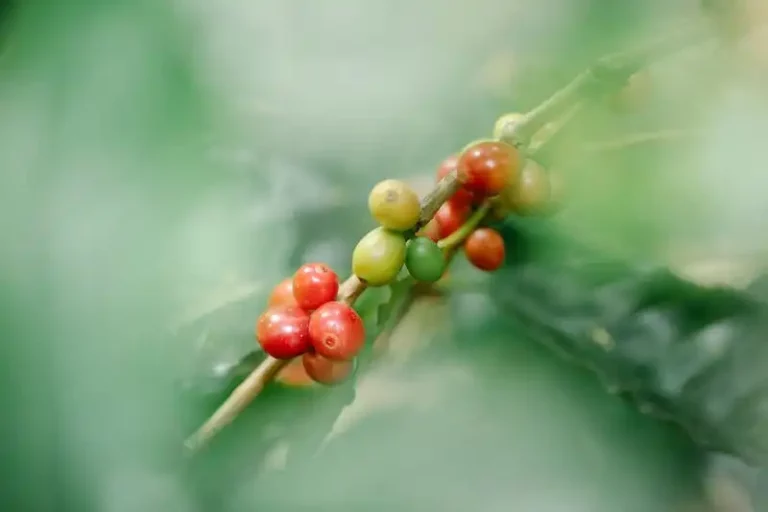Fruit vinegar is a delicious and versatile pantry staple that can be made easily at home through the process of fermentation. By utilizing fruit scraps that would otherwise go to waste, you can give new life to these leftovers and create a flavorful ingredient for an array of recipes. In this article, we will provide you with clear instructions on how to get started with fruit vinegar making and share some tips and insights along the way.
Above all, it’s important to understand the basic principles of fermentation. During this process, natural yeasts and bacteria break down sugars in the fruit, converting them into alcohol. This alcoholic liquid then undergoes a second fermentation phase in the presence of the acetobacter culture, which transforms the alcohol into acetic acid. This is what gives vinegar its tangy flavor. Throughout the continuum of fermentation, there are many factors that can influence the final product, from the type of fruit you use to the environment in which it ferments.
When it comes to making fruit vinegar at home, the possibilities are endless. While traditionally fruit vinegars are made using wine or grain as a base, you can also experiment with different fruits for unique flavor combinations. For example, apple cores, cranberries, or even hard cider can be used as the starting point for your homemade vinegar. If you’re unsure about what flavors and ingredients to use, don’t worry – we’ll cover some popular fruit vinegar recipes later on.
One of the key steps in making fruit vinegar is creating the right environment for fermentation. Fruit flies love the sweet smell of fermenting fruit, so you’ll want to make sure your containers are covered with cheesecloth or a clean kitchen towel to keep them out. This will also allow airflow, which is important for the fermentation process. Additionally, you’ll need to keep the fruit submerged in liquid to prevent molding. The best way to do this is by using a weight, like a jar filled with water, to hold the fruit down.
It’s worth noting that homemade fruit vinegar may take anywhere from a few weeks to several months to fully ferment, depending on the desired flavor and the ambient temperature. It’s best to let the vinegar sit undisturbed during this time, allowing the flavors to develop. Don’t worry if you see nothing happening in the first few weeks – the fermentation is still taking place, but the changes are not visible to the naked eye. Just be patient, and soon you’ll have a tangy and tasty liquid that you can use to enhance your cooking.
Now that you have a general understanding of the fruit vinegar-making process, let’s dive into the details of how to actually make it. Below you’ll find a step-by-step recipe for making your own fruit vinegar at home, along with some frequently asked questions and helpful tips from fermentation expert Sandor Katz.
Fruit Scrap Vinegar
If you have fruit scraps lying around in your pantry and don’t know what to do with them, making fruit scrap vinegar is a great way to use them up and add some flavor to your dishes. Fruit scrap vinegar is easy to make and can be used in a variety of recipes, from salad dressings to marinades and sauces.
To make fruit scrap vinegar, you will need a few basic ingredients:
| – | Fruit scraps (such as apple cores, citrus peels, or berries) |
| – | Water |
| – | Sugar or honey |
Here’s how to make fruit scrap vinegar:
- First, gather your fruit scraps. You can use any fruit scraps you have on hand, such as apple cores, citrus peels, or berries. Make sure to remove any visible mold or bad parts of the fruit scraps.
- Next, chop or tear the fruit scraps into smaller bits to aid in fermentation.
- Place the fruit scraps in a clean jar. You can use multiple jars depending on how much fruit scrap vinegar you want to make.
- In a separate jar, mix together water and sugar or honey. The ratio should be 2 parts water to 1 part sugar or honey. Stir until the sugar or honey is dissolved.
- Pour the water and sugar or honey mixture over the fruit scraps in the jar(s). Make sure the fruit scraps are fully submerged in the liquid.
- Cover the jar(s) with a breathable cloth, such as cheesecloth, and secure it with a rubber band. This allows the mixture to ferment while also preventing any bugs or debris from getting inside.
- Store the jar(s) in a cool, dark place for about a week. Check on the mixture periodically to make sure the fruit scraps are still submerged.
- After a week, you will start to see bubbles forming and smell a tangy aroma. This means that fermentation is happening.
- Once the desired fermentation time is reached, strain the liquid from the fruit scraps and discard the scraps.
- Pour the strained liquid into clean bottles and seal them tightly. The fruit scrap vinegar is ready to be used.
Now that you know how to make fruit scrap vinegar, here are a few ideas on how to use it:
- Mix it with olive oil, garlic, and Dijon mustard for a tangy salad dressing.
- Marinate chicken or pork in a mixture of fruit scrap vinegar, soy sauce, and honey for a flavorful main dish.
- Add fruit scrap vinegar to sauces and gravies for a fruity twist.
There are many benefits to making your own fruit scrap vinegar. It not only helps reduce food waste by using up fruit scraps that would otherwise be discarded, but it also adds a unique flavor to your dishes. Plus, homemade fruit scrap vinegar is free from any additives or preservatives that store-bought vinegars may contain.
So, the next time you have fruit scraps lying around, don’t throw them away. Instead, use them to make your own fruit scrap vinegar and enjoy the delicious flavor it adds to your favorite recipes.
Adding Live Vinegar and Grain Alcohol
To make fruit vinegar, you will need to introduce live bacteria called acetobacter to a mixture of fruit and grain alcohol. The vinegar-making process involves fermenting a combination of fruit and alcohol, and the bacteria in the acetobacter will convert the alcohol into acetic acid, giving the vinegar its tangy flavor.
Here’s how to add live vinegar and grain alcohol to your homemade fruit vinegar:
- Prepare the fruit: Start by preparing your chosen fruits for fermentation. Wash them thoroughly and remove any stems, seeds, or damaged parts.
- Combine fruit and alcohol: In a large jar, add the prepared fruits and pour grain alcohol over them. Use about 7 parts alcohol to 1 part fruit.
- Fermentation time: Cover the jar with a breathable cloth or a rubber band secured with a coffee filter. Let the mixture ferment for about 1 week. During this time, the yeast from the fruit will begin to ferment the sugars, turning them into alcohol.
- Add live vinegar: After a week of fermentation, strain out the fruit from the liquid. You can discard the fruit or use it for other projects. To introduce live vinegar to the mixture, add a small amount (about 1% of the total liquid volume) of store-bought live vinegar, or you can use a piece of a previous batch’s vinegar mother (SCOBY) if you have one.
- Continue fermenting: Cover the jar again with a breathable cloth or a rubber band secured with a coffee filter. Let the mixture continue fermenting for another 4 to 6 weeks. The acetic acid bacteria in the live vinegar will convert the alcohol into vinegar.
- Taste and adapt: After a few weeks of fermentation, taste the vinegar to see if it has reached your desired tanginess. If not, you can continue fermenting for a little longer.
- Bottling and storing: Once the vinegar is to your liking, strain it one final time to remove any sediment. Transfer the vinegar to clean, airtight jars for storage. It is now ready to be used in your favorite recipes!
Adding live vinegar and grain alcohol to your homemade fruit vinegar is an essential step in the fermentation process. The live vinegar introduces the necessary bacteria to convert the alcohol into acetic acid, resulting in a tasty and tangy vinegar. By following these instructions, you can create your own unique fruit vinegars to enhance your meals and homemade creations. Happy fermenting!
What kind of fruit makes the best vinegar
When it comes to making fruit vinegar at home, the good news is that you can use just about any fruit you have on hand. The frequentFAQ when it comes to fruit vinegar is what kind of fruit works best. According to Katz, author of “Wild Fermentation,” there’s really no limit to the liquids you can use as long as they have some alcoholic content. So whether you’re fermenting apples, peaches, blueberries, or even scraps from your fruit processing, you can easily make your own fruit vinegar.
However, there are some tips to keep in mind to ensure a successful vinegar ferment. One key difference between using fruits and other fermented foods is that fruit vinegar doesn’t require the use of a SCOBY (Symbiotic Culture of Bacteria and Yeast). While a SCOBY is highly beneficial for growing kombucha, it’s not necessary for making fruit vinegar. Instead, the natural bacteria and yeasts present on the fruit will do the job.
When it comes to flavoring, some fruits may yield more distinct flavors than others. For example, apple scraps and grapes are known to make tasty vinegars, while blueberries and raspberries add a unique and bold touch to the final product. The first maple _______ vinegar is again a homemade favorite and claims to have many health benefits. There’s also the classic plum vinegar, which is between sweet and tart and can be used in a variety of dishes.
But what if you’re not sure what fruit to use? The best approach is to use what you already have on hand and experiment with different fruits. You may discover new and exciting flavor combinations. And if you’re not yet ready to dive into the world of homemade fruit vinegar, you can always start by purchasing some commercially available fruit vinegars to see what appeals to your taste buds.
Just remember to keep your fermenting jars covered to allow the natural bacteria and yeasts to work their magic. Fermentation times will vary depending on the fruit and temperature, but most ferments can take anywhere from a week to several months. Once the fermentation is complete, you can strain out any fruit bits and transfer the vinegar to bottles for longer storing.
So whether you’re a fan of fruity vinegars or just looking to add some new flavors to your kitchen, making your own fruit vinegar is a fun and delicious project to try. Get creative with different fruits and find your perfect homemade vinegar!



